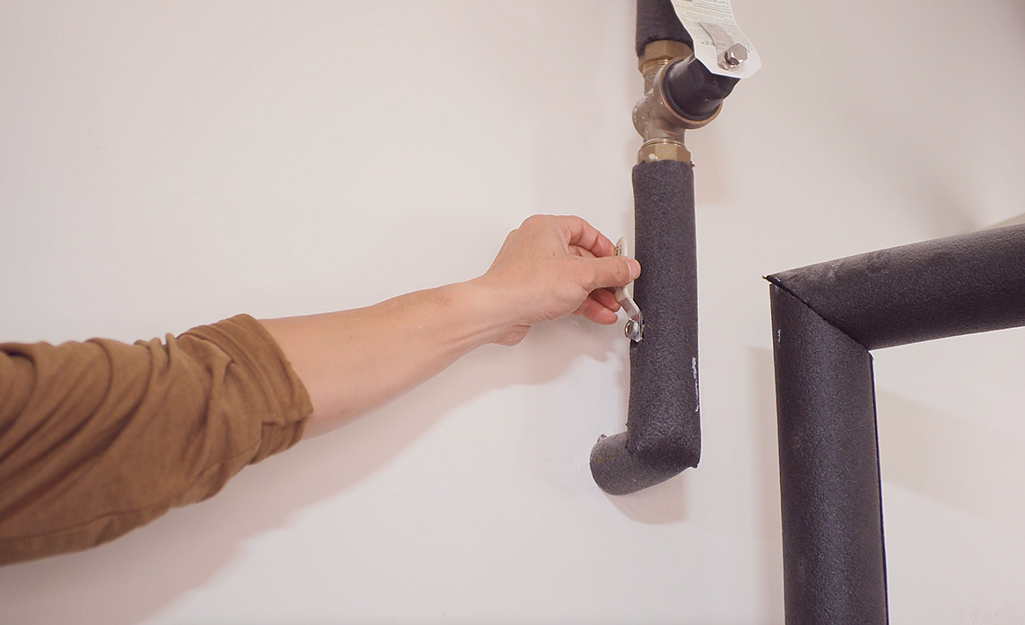The Factors Behind Resolving a Faulty Faucet
The Factors Behind Resolving a Faulty Faucet
Blog Article
Are you currently hunting for content around Water Dripping from Faucet: Why and How to Fix?

Dripping faucets may appear like a small hassle, however their impact goes beyond simply the aggravation of the audio. From drainage to incurring unnecessary economic expenses and health and wellness risks, ignoring a trickling faucet can cause various repercussions. In this write-up, we'll explore why it's important to address this typical household concern quickly and properly.
Waste of Water
Environmental Effect
Trickling faucets add considerably to water waste. According to the Epa (EPA), a single tap trickling at one drip per second can squander greater than 3,000 gallons of water per year. This not only stress water sources yet also affects ecological communities and wild animals depending on them.
Financial Costs
Increased Water Bills
Beyond the ecological effect, leaking taps can pump up water expenses significantly. The collected waste in time equates into higher utility costs, which could have been avoided with prompt repair services.
Prospective Building Damages
Furthermore, prolonged trickling can result in damage to fixtures and surface areas surrounding the tap. Water build-up can create staining, corrosion, and even architectural problems if left neglected, leading to added fixing expenses.
Wellness Issues
Mold and Mold Development
The continuous existence of dampness from a trickling tap creates an excellent environment for mold and mildew and mold growth. These fungis not only jeopardize indoor air quality however also posture wellness risks, particularly for individuals with breathing problems or allergic reactions.
Waterborne Illness
Stationary water in leaking faucets can come to be a breeding place for bacteria and other microorganisms, enhancing the danger of waterborne illness. Pollutants such as Legionella bacteria thrive in stationary water, possibly bring about significant health problems when ingested or inhaled.
Do it yourself vs. Expert Repair
Pros and Cons of DIY Fixing
While some may attempt to repair a trickling tap themselves, DIY repairs include their very own set of obstacles. Without proper understanding and tools, do it yourself efforts can intensify the concern or cause insufficient repair work, extending the trouble.
Benefits of Hiring an Expert Plumber
Working with a specialist plumber ensures that the underlying reason for the leaking faucet is attended to efficiently. Plumbing technicians have the know-how and equipment to detect and fix faucet issues effectively, saving time and minimizing the danger of additional damages.
Step-by-Step Guide to Taking Care Of a Dripping Faucet
Tools Needed
Prior to trying to repair a trickling tap, gather the required devices, including an adjustable wrench, screwdrivers, substitute parts (such as washing machines or cartridges), and plumber's tape.
Typical Tap Issues and Their Solutions
Determine the sort of faucet and the details problem creating the drip. Typical troubles include damaged washers, rusty valve seats, or faulty O-rings. Describe supplier instructions or on the internet tutorials for detailed guidance on repair services.
Safety nets
Regular Maintenance Tips
To avoid dripping faucets, carry out routine upkeep such as cleansing aerators, checking for leaks, and replacing worn-out components promptly. Additionally, think about setting up water-saving gadgets or upgrading to more efficient fixtures.
Relevance of Prompt Services
Resolving trickling taps as quickly as they're observed stops further water wastage and possible damage, ultimately conserving both water and money in the future.
Effect On Property Worth
Understanding of Well-Maintained Property
Keeping a building in good condition, including resolving maintenance problems like trickling faucets, improves its viewed worth and desirability among possible buyers or renters.
Impact on Resale Worth
Residences with properly maintained plumbing components, including faucets, command higher resale values in the property market. Addressing dripping faucets can contribute to a positive impact during building assessments and negotiations.
Environmental Responsibility
Individual Payment to Conservation
Taking responsibility for taking care of dripping taps aligns with broader initiatives toward water conservation and environmental sustainability. Every person's activities collectively make a substantial impact on preserving valuable sources.
Lasting Living Practices
By focusing on punctual repairs and taking on water-saving routines, people contribute to lasting living practices that profit both existing and future generations.
Conclusion
Resolving a dripping faucet surpasses mere comfort; it's an important action towards conserving water, decreasing monetary prices, and safeguarding health and wellness and residential property. Whether via DIY repair work or expert support, acting to fix dripping taps is a little yet impactful means to advertise accountable stewardship of sources and add to a healthier, much more sustainable future.
How to Fix a Leaky Faucet: Step-by-Step Repair Guide
A leaky faucet may seem like a simple annoyance, but if it's not fixed promptly, that leak could cost hundreds to potentially thousands. From water damage to mold, mildew, and high water bills, even a tiny leak can be catastrophic if left unattended. Damage like this can even affect the overall value of your home, so it's important to take the right approach for leaky faucet repair. You may need the help of a plumber in some cases, but we've got a few tips you can try on how to fix a leaky faucet before calling the pros.
Four Faucet Types
When you're learning how to fix a leaky faucet, the first step is knowing what kind of faucet you're working with! There are four common types.
Cartridge Faucets
Cartridge faucets come in one- or two-handled varieties. In one-handled cartridge faucets, hot and cold water combines in a single cartridge. In the two-handled versions, hot and cold water are controlled separately and mixed in the faucet.
Ball Faucets
Ball faucets have a single lever you push up and down to adjust the pressure and rotate to change the temperature. A slotted metal ball controls the amount of water allowed into the spout.
Compression Washer Faucets
They're the oldest type of faucet, but they're still used in many homes — especially older ones. Compression faucets have two separate handles that, when turned, raise or lower the washer that seals a water valve. This valve stops water from flowing through the faucet when it is turned off.
Disc Faucets
Disc faucets rarely need to be repaired due to their maintenance-free design. The water flow is controlled by two discs — the upper one raises and lowers against a fixed lower disc, creating a watertight seal. If your disc faucet starts leaking, you may need to replace the seals or clean residue buildup from the inlets.
Fixing a Leaky Faucet
Step 1: Turn Off the Water
Whether you're learning how to fix a leaky bathtub faucet or how to fix a leaky kitchen faucet, always turn off the water supply to your working area when you're fixing a leak. The last thing you want is a flood added to your list of things to fix.
Look for the shutoff valves below your sink or around the tub and turn them clockwise to stop the water flow. If your faucet doesn't have shutoff valves, you may need to turn off the water for the whole house. Check to make sure it's off by turning the faucet on. If nothing comes out, you're ready to start the repair.
Step 2: Take Apart the Faucet
How you disassemble your faucet depends on the type of fixture you have. You can use a flathead screwdriver to remove the caps on top of the handle or handles for cartridge and compression faucets. Inside, you should see handle screws. Unscrew these with a screwdriver to remove the handle.
Disc- and ball-style faucets will typically have an inlet screw near the handle, and removing that will reveal the interior of the faucet.
Detach the Valve Stem
For cartridge- and compression-style faucets, you'll see the inner valve stem or cartridge once you remove the faucet handles. If you have a compression faucet, unscrew the brass valve stem. If you have a cartridge faucet, pull out the cartridge. If your cartridge has been in place for a while, it may require some tools or extra force to remove it due to mineral deposits.
Examine and Replace Parts
Once you've removed the parts, check them out to confirm what needs to be replaced. You may see corroded rubber washers, O-rings, stems, or cartridges. On a ball-style faucet, check the seats and springs for damage.
If you need to repair a leaky disc faucet, check the inlet and seals on the lower disc.
Once you determine what parts must be replaced, visit your local hardware store. Bring the damaged parts with you to ensure you can purchase the correct components to replace them.
Clean Valves and Faucet Cavity
If you've removed a stem or cartridge, you may notice mineral buildup in the faucet's threads. Use white vinegar to clean the valve seat by soaking it for a few minutes, then scrub it away with a soft toothbrush and rinse with warm water. You can also clean the interior of the faucet in the same way.
Reassemble the Faucet
Once your faucet is cleaned and the required parts have been replaced, it's time to reassemble it. Put the pieces back together and slowly turn the water supply back on. Doing this slowly is crucial because too much initial water pressure can damage the new hardware you've just installed.
https://homewarranty.firstam.com/blog/how-to-fix-leaky-faucet

As a serious person who reads on Why It's Important to Fix Leaky Faucets, I figured sharing that segment was a good thing. Sharing is good. Helping people is fun. We recognize the value of reading our article about Should I Repair or Replace a Leaky Faucet?.
Report this page